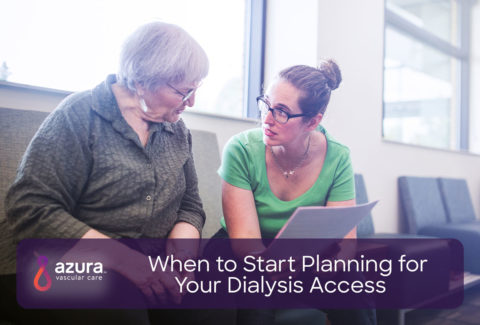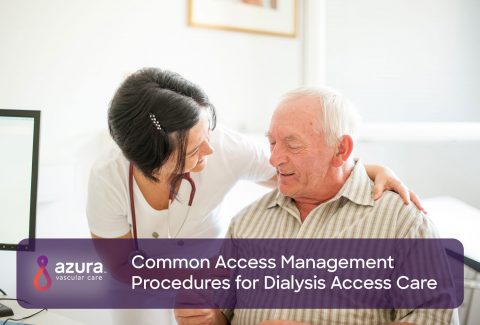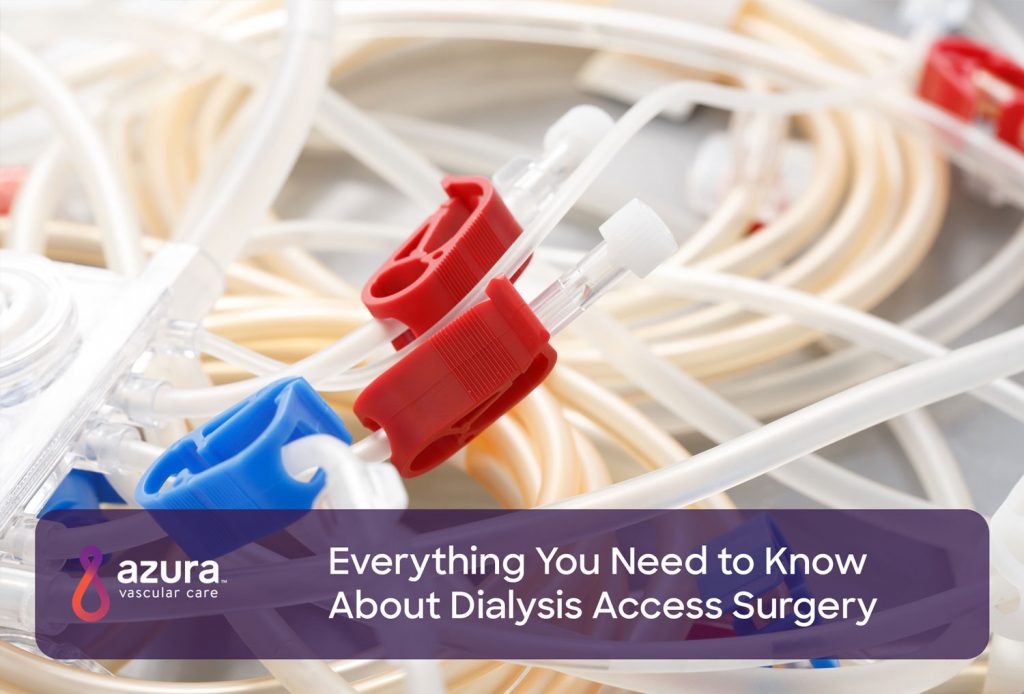
If you are living with End Stage Renal Disease (ESRD), when your kidneys can no longer perform the functions they are meant to perform, you will require a vascular access in order to receive lifesaving dialysis treatments. You are also a candidate for an access when your Chronic Kidney Disease (CKD) has reached stage 3 or 4 and your physician recommends having an access placed in preparation for ESRD and dialysis treatment.
Access creation of an arteriovenous fistula or arteriovenous graft for hemodialysis is a minor surgical procedure that can be done in an outpatient setting and does not require hospitalization. A vascular surgeon will perform the procedure and whenever possible will construct the AV Fistula access using only one incision and the AV Graft access with only two small incisions.
Access creation is a minor surgical procedure that can be done in an outpatient setting and does not require hospitalization.
Preparing for Dialysis Access Surgery
When preparing for access placement, you and your physician will work together to choose an access site. This process is called vessel mapping. Vessel mapping includes taking a history of any past peripheral artery disease, a test to determine blood flow rate (testing done with ultrasound, venogram, or x-ray) and an analysis of the depth and size of the veins and arteries.
Your physician will provide you with specific instructions to follow prior to the procedure. For example, you may need to fast for 8 hours before the procedure or limit or stop certain medications that could create complications.
What to Expect During Your Access Placement
During access placement, the physician may give you medication to moderately sedate you, and then a local anesthetic will be used to numb the area where the access is created. Most accesses are placed on the forearm of your non-dominant arm. Typically, patients are able to go home the same day after the procedure. The procedures for fistulas versus a graft are similar, but have some specific differences.
During arteriovenous fistula creation, the physician will administer local anesthesia to the chosen access site, typically the forearm. A small incision will be created which allows them to gain access to the selected arteries and veins. The physician will divide the vein and sew it to the side of an artery where an opening has been made. Once the access creation is complete, it will then typically take about 3-6 months to mature and be ready to use for dialysis.
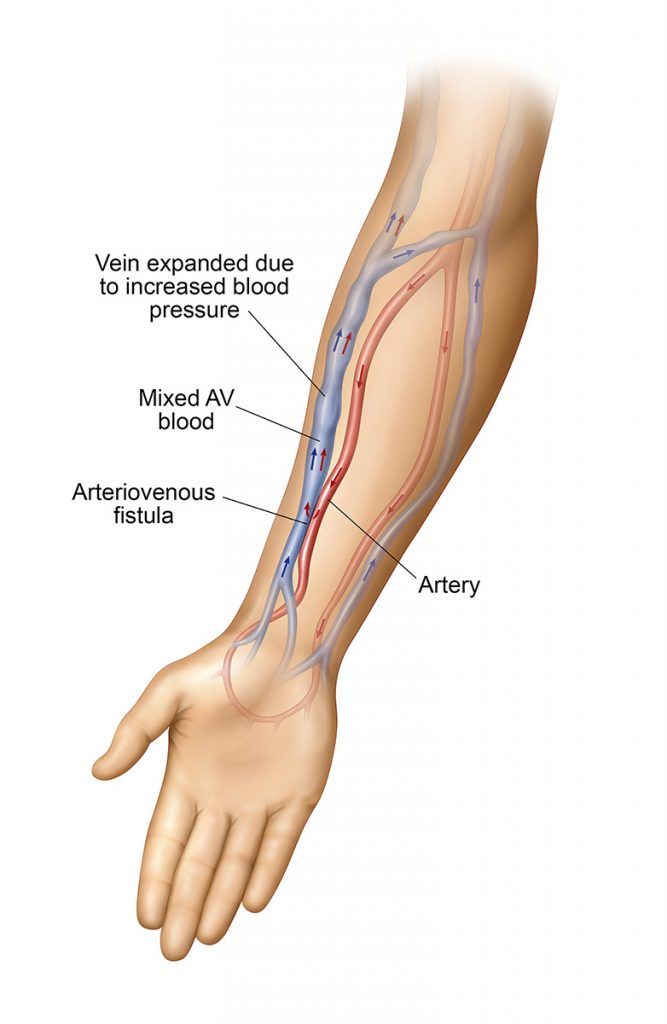
A physician will place an arteriovenous graft using a synthetic tube. The physician will administer local anesthesia to the selected access site, typically the upper or lower arm and create a small incision which allows them to gain access to the selected artery and vein. The graft is first sewn to a vein and the other end of the graft is connected to an artery. Once the access is placed, it will typically take about 2-6 weeks to heal and be ready to use for dialysis.
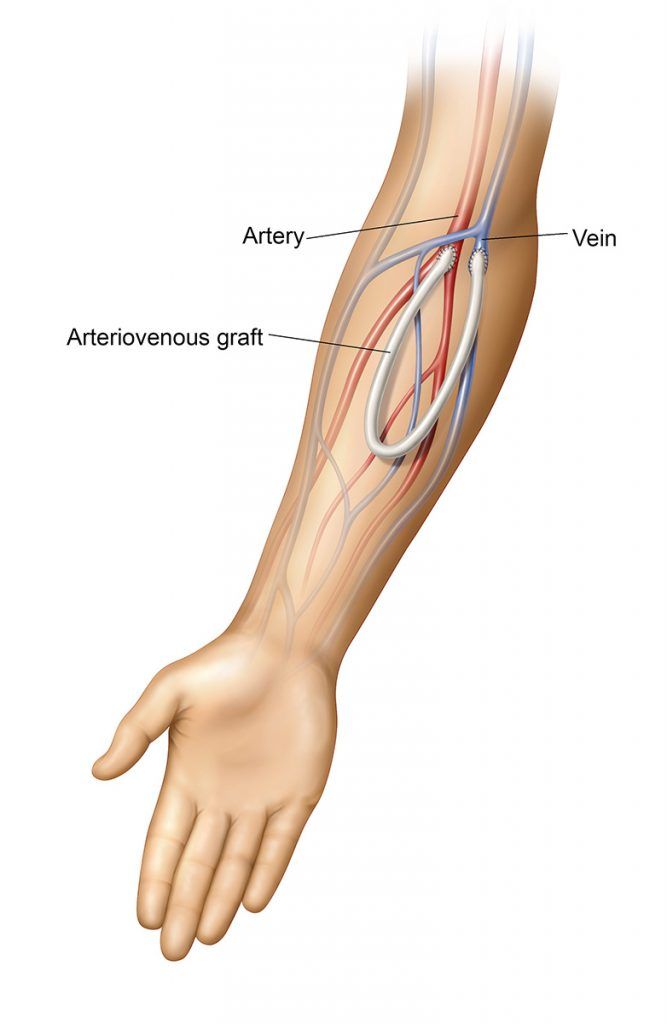
What to Expect After the Procedure
Once the procedure is complete, you will be told to initially keep the access raised above the level of your heart to reduce both swelling and pain at the access site. Your physician may prescribe a pain killer if needed to manage pain. Initially you may feel numbness of the hand, but these symptoms should subside in a few weeks as your circulation regulates.
Suggested Tips to Follow After Dialysis Access Surgery
- DO NOT soak or scrub the surgical site until fully healed.
- DO NOT lift anything weighing 15 pounds or more, and avoid any activities that would compress the access site.
- DO make sure to call your physician if you have bleeding, drainage or a fever above 101 degrees Fahrenheit.
- DO keep your incision dry for a minimum of 2 days post-procedure.
Related: What do Do If Your Dialysis Access Is Not Working Properly
Taking Care of Your Access
Your access is your lifeline. Without it, there is no way to reach and clean your blood when your kidneys no longer function adequately. Dialysis access care should be a top priority. Properly caring for your access results in fewer problems, and a better functioning and longer lasting access, leaving you feeling better!

